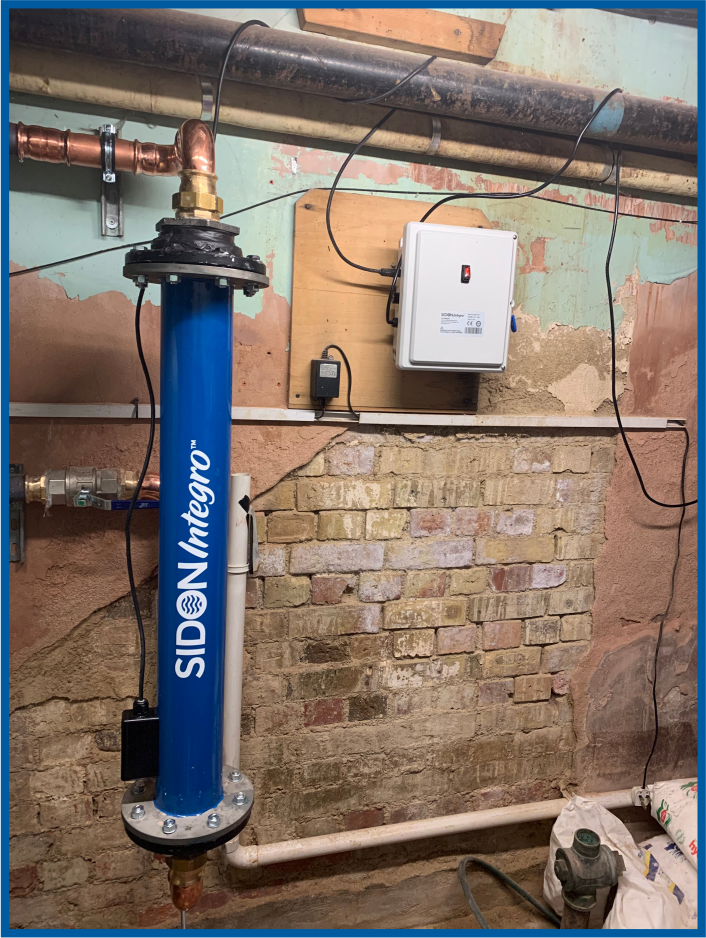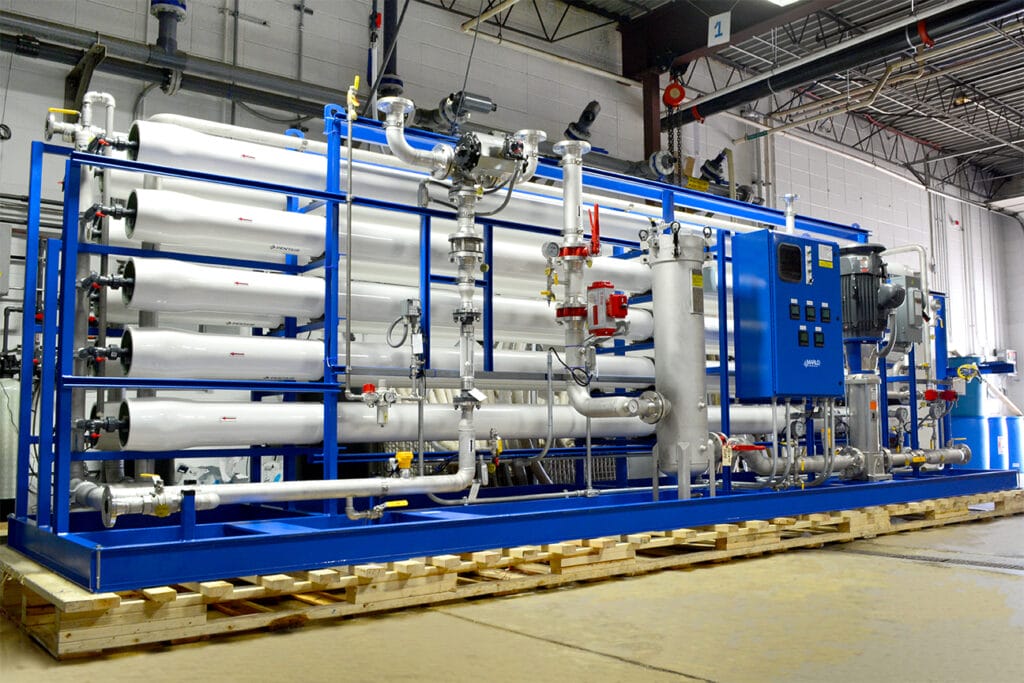Biofouling is one of the most persistent and costly challenges in water treatment systems, particularly in reverse osmosis (RO) setups. As biofilms form on membrane surfaces, they reduce flow rates, increase pressure drops, and lead to higher operational costs and more frequent membrane replacement. Traditional chemical and mechanical cleaning methods are reactive, labour-intensive, and often only provide temporary relief.
This is where Sidon Water’s IntegroTM system offers a breakthrough. Engineered to work as a non-chemical, inline conditioning solution, the IntegroTM has shown significant promise in both reducing existing biofilm and preventing future accumulation across a wide range of water treatment environments, especially on filtration media such as RO membranes.
Understanding the Problem: Biofouling on RO Membranes
Biofouling occurs when microorganisms adhere to a surface in a moist environment and begin to excrete extracellular polymeric substances (EPS), creating a slimy matrix that traps other particles and organisms. On RO membranes, this biofilm acts as a barrier, reducing permeability, lowering recovery rates, and requiring more frequent chemical clean-in-place (CIP) procedures.
Even with pretreatment and regular cleaning, RO systems often suffer from recurring biofouling which degrades membrane performance and increases energy consumption.
How the IntegroTM Works
The IntegroTM operates by introducing controlled, non-chemical energy into the water stream, using Sidon Water’s proprietary technology. This added energy influences the physical and biological characteristics of the water, altering how particles and microorganisms behave as they move through the system.
By imparting this energy, the IntegroTM interferes with the formation and persistence of biofilms at multiple points in their development:
– Disruption of EPS Production: The energy input affects microbial behaviour, particularly their ability to produce the extracellular polymeric substances (EPS) that are essential for biofilm formation and adhesion to surfaces.
– Destabilisation of Existing Biofilm: Established biofilm becomes less cohesive and structurally weaker, making it more porous and easier to dislodge through normal hydraulic forces such as flow turbulence or backflushing.
– Surface Interaction Changes: The treated water exhibits altered interfacial properties, reducing the tendency of organic and biological matter to stick to membranes and filtration media.
This multifaceted process not only helps to prevent new biofilm from forming but also aids in the gradual removal of existing fouling. These outcomes have been confirmed through independent validation and real-world installations, demonstrating the system’s practical effectiveness.
Does the IntegroTM Remove Existing Biofouling?
Yes, but with nuance. While the IntegroTM is primarily designed as a continuous treatment system to prevent biofouling, data indicates that it can also gradually reduce existing biofilm layers.
For example, in validation testing conducted on a pilot cooling tower system, introduction of the IntegroTM led to measurable reductions in biofilm thickness on treated surfaces over several weeks. The system did not employ any additional cleaning or biocide dosing during this period, suggesting that the IntegroTM alone played a central role in the decline of established fouling.
That said, the IntegroTM is not an instantaneous or aggressive biofilm remover like high-dose biocides. Its effect is gradual, working over time to destabilise and loosen biofilm, making it easier for standard hydraulic forces to carry it away. This slow-clearing process is advantageous in systems where sudden sloughing of biofilm could cause downstream clogging or water quality issues.
Preventing Future Biofouling: Where the IntegroTM Shines
Prevention is where the impact of the IntegroTM is most pronounced. By continuously altering microbial behaviour in the water phase, the system reduces initial colonisation of surfaces, limiting the early-stage growth that typically leads to stubborn biofilms.
In RO systems, this can mean:
– Extended intervals between cleanings
– Improved membrane efficiency
– Lower differential pressures across membranes
– Reduced chemical use and operating costs
Field installations of the IntegroTM have reported biofilm reduction of up to 70-90% over several months, depending on water chemistry, flow regime, and initial fouling levels.
Compatibility with RO and other Filtration Media
Unlike chemical treatments that risk membrane degradation or fouling of sensitive filtration media, the IntegroTM is non-invasive. This makes it especially suitable for RO systems where feed water quality must be tightly controlled.
Moreover, the technology is:
– Easy to retrofit into existing systems
– Low maintenance, requiring no consumables
– Environmentally friendly, with no emissions or chemical discharge
A Strategic Solution for Water Operators
For water treatment professionals, particularly those managing RO plants, cooling towers, or industrial filtration systems, the IntegroTM offers a compelling alternative to the chemical status quo. By combining physical water conditioning with passive biofilm disruption, it creates a system that:
– Prevents new fouling from taking hold
– Slowly removes existing biofilms
– Enhances overall system performance
Given the rising costs of membrane replacement, energy, and chemical handling, not to mention environmental and regulatory pressures, technologies like the IntegroTM represent a smart and sustainable investment.
Get in Touch
If you’re facing persistent biofouling challenges in your RO or filtration systems, it’s time to consider a smarter, more sustainable solution. The IntegroTM offers proven performance, minimal maintenance, and a chemical-free approach to improving system efficiency and reliability. Contact Sidon Water today to learn how the IntegroTM can be integrated into your operations and start experiencing the benefits of cleaner membranes, reduced downtime, and lower operating costs.



